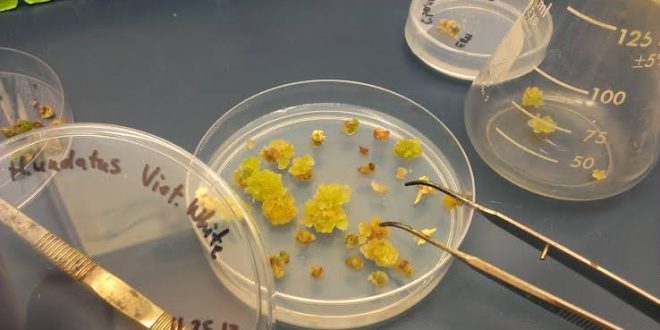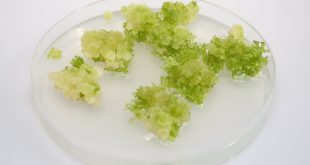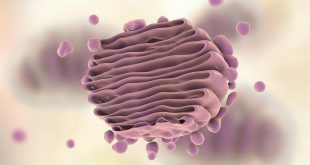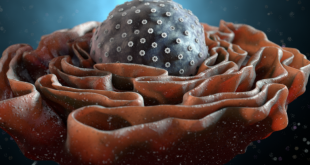Do you have ever heard the term ‘POMATO’ ?
Pomato is the result of the hybridization of two somatic cell- potato and tomato. From a somatic cell, developed by the fusion of protoplasts from potato and tomato, is cultured to get a new harvest- pomato. In this harvest, the characteristics from both potato and tomato are present partially.

The method of producing pomato is a special type of hybridization, called somatic cell hybridization or somatic hybridization. In this article, we will discuss about the basic ideas of somatic hybridization briefly.
At the very begining you have to recall few terms mentioned below to enter into the basic part.
Somatic cell: Cell of the living organism that doesn’t have sperm and egg cells (reproductive cells), are called somatic cell. Somatic cells are diploid (2n). 
Protoplast: The whole part of the cell except cell wall.
Hydrids: The new offspring formed by the combination of qualities from two different organisms.
Somatic Hybridization
The production of hybrid organism by fusing protoplast of two different plant species is known as somatic hybridization.
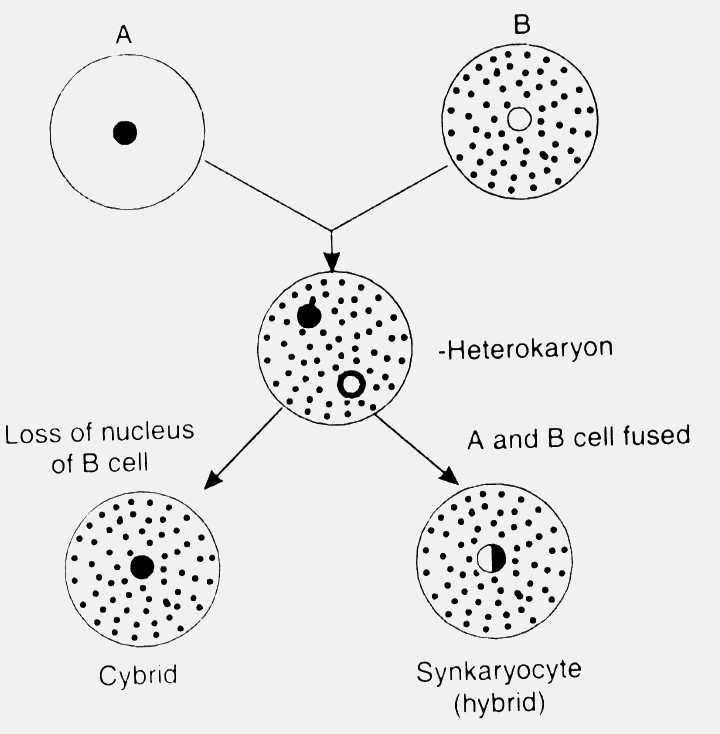
Methods of somatic hybridization
Following procedures are applied for successful somatic hybridization:
- Isolation of protoplasts from suitable plants.
- Mixing of protoplasts in centrifuge tube containing fugigenic chemicals.
- Wall regeneration by heterokaryotic cells.
- Fusion of nuclei of heterokaryon to produce hybrid cells.
- Plating and production of colonies of hybrid cells.
- Selection of hybrid, subculture and induction of organogenesis in the hybrid colonies.
7. Transfer of mature plants from the regenerated callus.

Limitations of Somatic Hybridization
- Production of fertile seeds are not ensured from the hybrids formed in this method.
- Genetic instability may occurs here (concerned with protoplast culture).
- This method is only suitable for haploid (n) protoplasts. So the processes of selecting and collecting cell (basically protoplast) have to be too much restricted. That limits the area of applying this method.
- The successful outcome of a specific trait/ targeted trait is not guaranteed.
- The process of fusing protoplast can easily be done but it seems to be matter of hardcore consciousness and experiences to produce viable somatic hybrid/s.
 Plantlet The Blogging Platform of Department of Botany, University of Dhaka
Plantlet The Blogging Platform of Department of Botany, University of Dhaka
